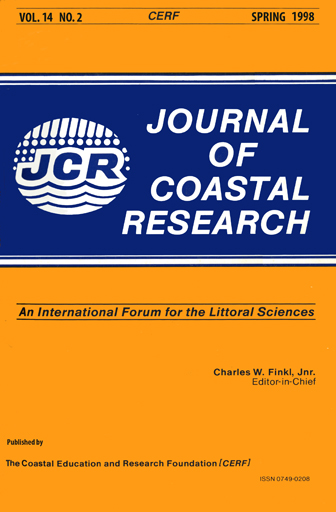Morphodynamic Impact of Sea Breeze Activity on a Beach with Beach Cusp Morphology
Keywords:
Beach morphology, wind waves, beach cusp coastal processesAbstract
Beach morphology and nearshore hydrodynamics were monitored over a number of sea breeze cycles on a beach with pronounced beach cusp morphology in southwestern Australia. The action of the sea breeze resulted in consistent changes to the incident wave field and beach cusp morphology, and induced a diurnal cycle of beach change. The morphological changes were accomplished without an apparent sediment gain or loss, but involved a redistribution of sediment within the cusp morphological system.
During the sea breeze, the addition of locally-generated, short-period wind waves to the background swell resulted in an increase in wave height, a decrease in wave period and an intensification of the nearshore currents. The cusp morphology became increasingly subdued due to accretion in the embayment and, to a lesser extent, erosion of the horns. After the cessation of the sea breeze, the wind-wave energy level gradually decreased and the associated wind-wave period increased. Accretion on the cusp horns was accompanied by minor erosion of the embayment and resulted in an accentuation of the cusp morphology. The build-up of the cusp morphology was a consequence of the morphodynamic feedback between the antecedent cusp morphology and the wave runup characteristics. The wave runup was diverted from the horn into the embayment, resulting in decreased backwash volumes and hence build-up of the horn. In the cusp embayment, increased backwash volumes resulted in scouring and the suppression of potential swash events at the base of the beachface. Consequently, the proportion of infragravity-wave energy in the runup record was larger in the embayment than on the horn.
Ten hours after the sea breeze had stopped blowing, significant amounts of wind-wave energy were still present. It is suggested that these wind waves were generated a distance of almost 200 km south of the study area, implying that the presence of the local sea breeze may have regional implications for coastal processes.


